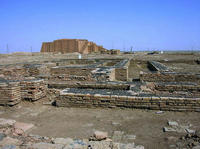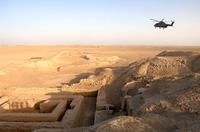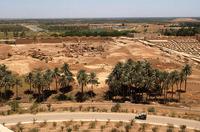You are in: Middle East -> Iraq -> The Ahwar of Souther... , and traditional search or Image Gallery will yield results of this site only
The Ahwar of Southern Iraq: Refuge of Biodiversity and the Relict Landscape of the Mesopotamian Cities
| Site number: | 1481 |
|
| Type of site: | Mixed | |
| Date of Inscription: | 2016 | |
| Location: | Middle East, Iraq, Ahwar | |
Up to 75 images are shown here. Click on each for more details or on Image Gallery for more images.
| Description: | The Ahwar is made up of seven components: three archaeological sites and four wetland marsh areas in southern Iraq. The archaeological cities of Uruk and Ur and the Tell Eridu archaeological site form part of the remains of the Sumerian cities and settlements that developed in southern Mesopotamia between the 4th and the 3rd millennium BCE in the marshy delta of the Tigris and Euphrates rivers. The Ahwar of Southern Iraq – also known as the Iraqi Marshlands – are unique, as one of the world’s largest inland delta systems, in an extremely hot and arid environment. --WHMNet's description is from WHC Site, where additional information is available. | |
| The Ahwar of Southern Iraq: Refuge of Biodiversity and the Relict Landscape of the Mesopotamian Cities is a UNESCO World Heritage Site located in south Iraq. The Ahwar currently consists of seven sites, including three cities of Sumerian origin and four wetland areas of the Mesopotamian Marshes: 1. Huwaizah Marshes 2. Central Marshes 3. East Hammar Marshes 4. West Hammar Marshes 5. Uruk Archaeological City 6. Ur Archaeological City 7. Tell Eridu Archaeological Site --Wikipedia. Text is available under the Creative Commons Attribution-ShareAlike License. | ||
| Source: | http://whc.unesco.org/en/list/1481 | |
| Source2: | Wikipedia (http://wikipedia.com) | |
| Reference: | 1. UNESCO World Heritage Center (http://whc.unesco.org/en/list/1481). 2. Wikipedia. | |












